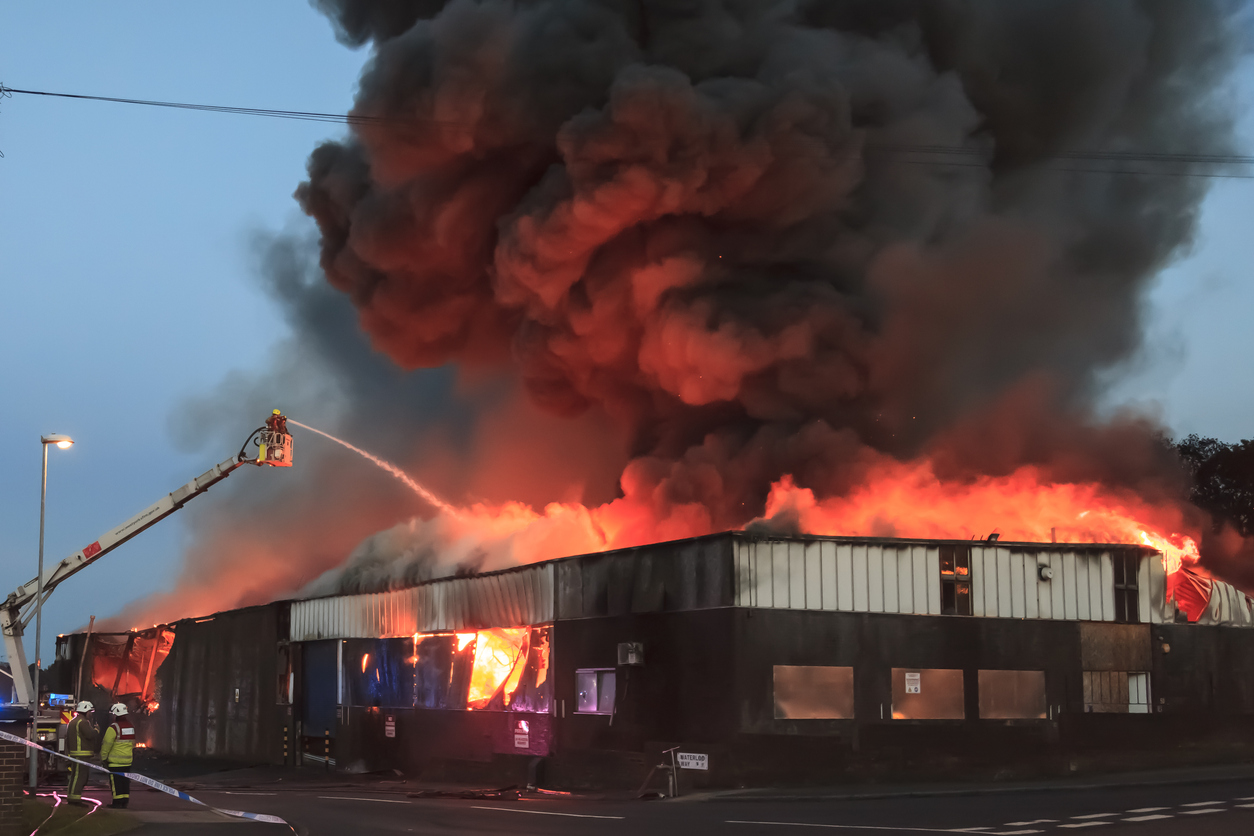The warehousing and storage industry generated $33 billion in revenue in the United States in 2022, according to Statista. Warehouses across the country store a wide range of goods and materials to meet various demands from industries, businesses, and consumers. The types of goods and materials stored can vary significantly based on the purpose of the warehouse, the industries it serves, and the region in which it’s located.
Warehoused goods and materials may include consumer goods (electronics, furniture, appliances, etc.); raw materials (metals, plastics, textiles); industrial equipment used for construction, manufacturing, and agriculture; perishable goods (fruits, vegetables); automotive parts; building materials (lumber, cement, bricks, etc.); pharmaceuticals and medical supplies; e-commerce inventory; chemicals; and hazardous materials. Depending on the goods and materials stored, fire exposure can vary, as certain goods are more susceptible to ignition, combustion, and rapid spread of fire.
Fire Exposure
For example, goods such as fuels, oils, solvents, paints, chemicals, and gases are highly flammable and can contribute to rapid growth of fires. Warehouses storing perishable goods like fruits, vegetables, and dairy products might have electrical systems and cooling equipment that can malfunction or fail, leading to electrical fires or fires caused by temperature fluctuations.
Electronic devices and equipment can generate heat, and malfunctioning components can spark fires. Additionally, the presence of lithium-ion batteries in electronics poses a fire risk, especially if the batteries are damaged or overcharged. Warehouses storing hazardous chemicals face a high fire risk, as the interaction of incompatible chemicals, leakage, or improper storage can lead to fires or even explosions.
Fabrics and textiles can catch fire easily and spread flames quickly. Products made of wood and paper, such as furniture and cardboard boxes, can fuel fires. Warehouses storing hazardous waste materials are at risk of fires due to the unpredictable nature of these substances. Improper chemical disposal practices or leaks can lead to fires. Certain types of plastics can ignite easily and release toxic fumes when burning.
Underwriter’s Assessment of Fire Risk
Underwriters in assessing a warehouse’s exposure to fire will look at the goods and materials being stored and other important factors, including the following:
- The structure of the warehouse as well as the materials and components used in its construction (e.g., the use of fire-resistant building materials in the construction or retrofit of a warehouse will slow down the spread of fire and provide more time for evacuation).
- Products, packaging materials, and storage: This includes looking at whether materials are stored according to their compatibility and flammability. For example, flammable and combustible materials should be stored in designated areas with proper ventilation and separation from ignition sources.
- Storage type (e.g., bulk, block, or high-bay racking).
- Layout of the storage space (size and height).
- Storage and retrieval machinery (e.g., industrial trucks, forklift trucks) and other technical equipment.
- Fire-control measures in place such as sprinklers, alarms, fire zone dividers, and water supplies.
- Adequacy and dependability of safety measures, including compliance with local regulations; system maintenance and testing procedures; fire sprinkler design and installation; and the performance of regular inspections.
- Employee training on proper procedures and protocols in the event of a fire outbreak, including having a comprehensive emergency response plan in place.
Standard Safety Measures for Preventing Warehouse Fires
Following are several safety measures that a warehouse owner should implement to prevent fires:
- Fire prevention plan that outlines fire safety procedures, emergency contacts, evacuation routes, and roles and responsibilities of personnel.
- Regular inspections to identify and address fire hazards, damaged equipment, faulty wiring, and potential ignition sources.
- Clearance of aisles and exits of clutter and obstructions to facilitate easy movement during emergencies and allow firefighters to access the building.
- Electrical safety to ensure that systems are installed, maintained, and used according to relevant codes and standards.
- Installation of fire suppression systems to quickly detect and suppress fires before they spread.
- Strategic placement of fire extinguishers throughout the warehouse and employee training on how to use them effectively. Regular inspections to ensure fire extinguishers are operational.
- Emergency lighting for adequate illumination during power outages or emergencies, ensuring safe evacuation.
- Proper management of flammable waste disposal, including rags and other items that can ignite spontaneously.
- Sprinkler maintenance to ensure proper operation and effectiveness.
- Heating equipment safety to ensure installation and operation are done according to safety guidelines.
About Seneca Insurance Companies
Seneca Insurance Companies are known for having a broad appetite in writing property risks. We offer both admitted and non-admitted ISO-based policies, with catastrophe perils offered based on location and risk characteristics

